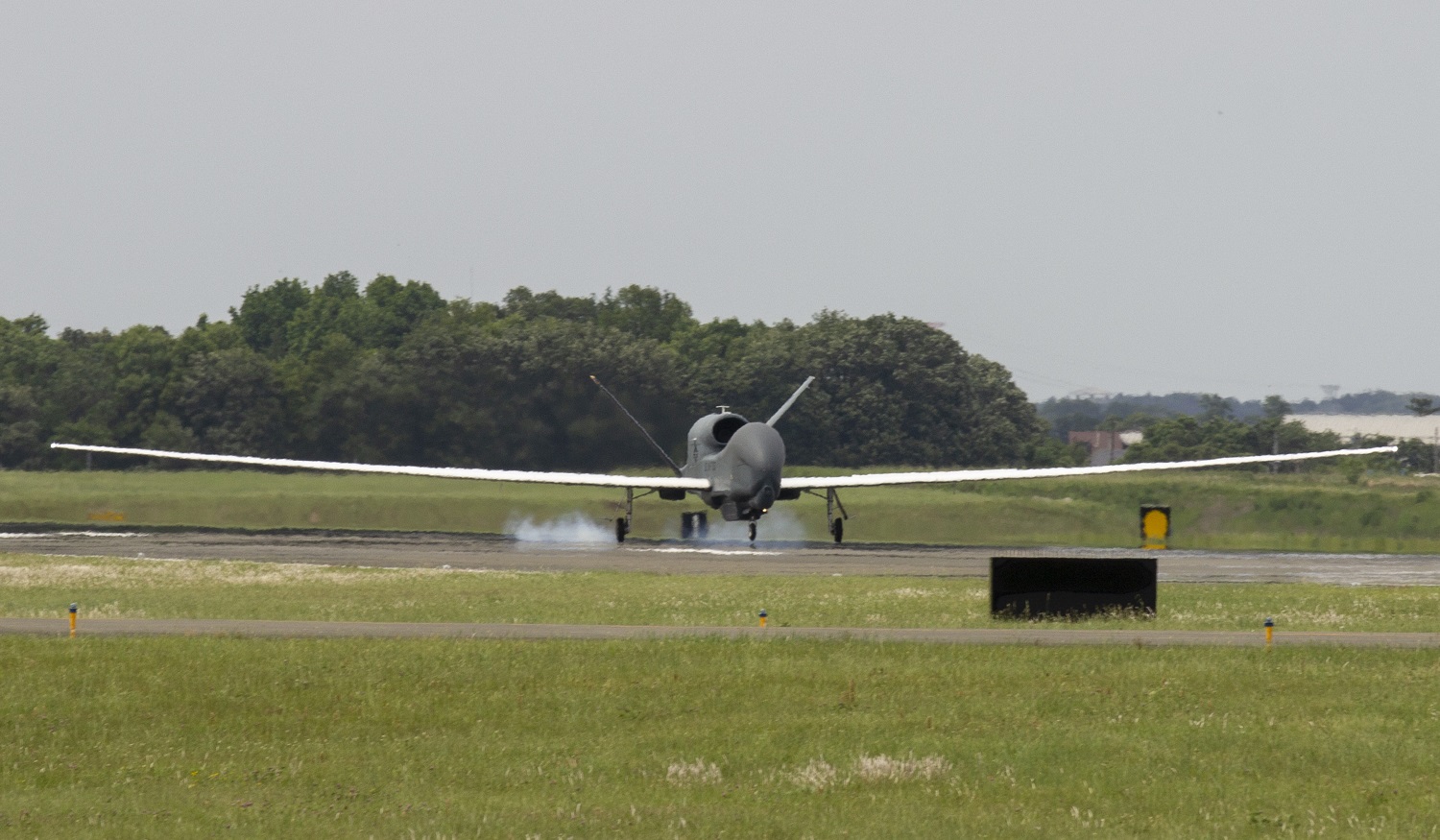Pacific Air Forces will conduct a rotation of Northrop Grumman RQ-4 Global Hawks from Andersen Air Force Base, Guam, to Yokota Air Base beginning May 30 to ensure continuous operations in support of U.S. Indo-Pacific Command’s reconnaissance requirements.
The rotation of Global Hawks, owned by the 319th Reconnaissance Wing Detachment 1, to Yokota AB provides a stable __cpLocation from which the platform can operate when inclement weather in Guam, including typhoon activities, historically hinder readiness.
“Having alternate locations to execute our mission during seasons of inclement weather ensures our ability to continue executing U.S. Indo-Pacific Command and the alliance reconnaissance requirements in support of the defense of Japan and to maintain international peace and security in the region,” explained Lt. Col. Ben Craycraft, 319th Operations Group Detachment 1 commander.
“I am extremely excited to return to Yokota (AB) and continue to build our partnership with this extremely capable base and its supportive community,” he continued. “As in 2019, Yokota AB continues to provide the most ideal __cpLocation for our operations due to the Kanto Plain’s favorable weather and our ability to conduct operations without causing impacts to Yokota (AB)’s flight operations or the local communities surrounding the base.”
The Global Hawk’s mission is to support a broad spectrum of U.S. intelligence, surveillance and reconnaissance, or ISR, collection capabilities to support joint combatant forces in worldwide peacetime, contingency and crisis operations.

In addition to supporting ISR requirements, the Global Hawk has been used for humanitarian assistance and disaster relief operations, such as Operation Tomodachi and in support of multiple search and rescue missions in the vicinity of Japan.
The Northrop Grumman RQ-4 Global Hawk is a high-altitude, remotely-piloted, surveillance aircraft. It was initially designed by Ryan Aeronautical (now part of Northrop Grumman), and known as Tier II+ during development. The Global Hawk performs duties similar to that of the Lockheed U-2. The RQ-4 provides a broad overview and systematic surveillance using high-resolution synthetic aperture radar (SAR) and long-range electro-optical/infrared (EO/IR) sensors with long loiter times over target areas. It can survey as much as 40,000 square miles (100,000 km2) of terrain a day, an area the size of South Korea or Iceland.
“Yokota (AB) continues to demonstrate it is one of the most effective and capable bases to safely receive aircraft and personnel during annual rotations or during a crisis or contingency,” added Col. Otis Jones, 374th Airlift Wing commander. “Whether it’s an unseen enemy like the coronavirus or more visible threats like typhoons, Team Yokota is ready to ensure our partners and allies can continue their mission from a reliable airfield.”
